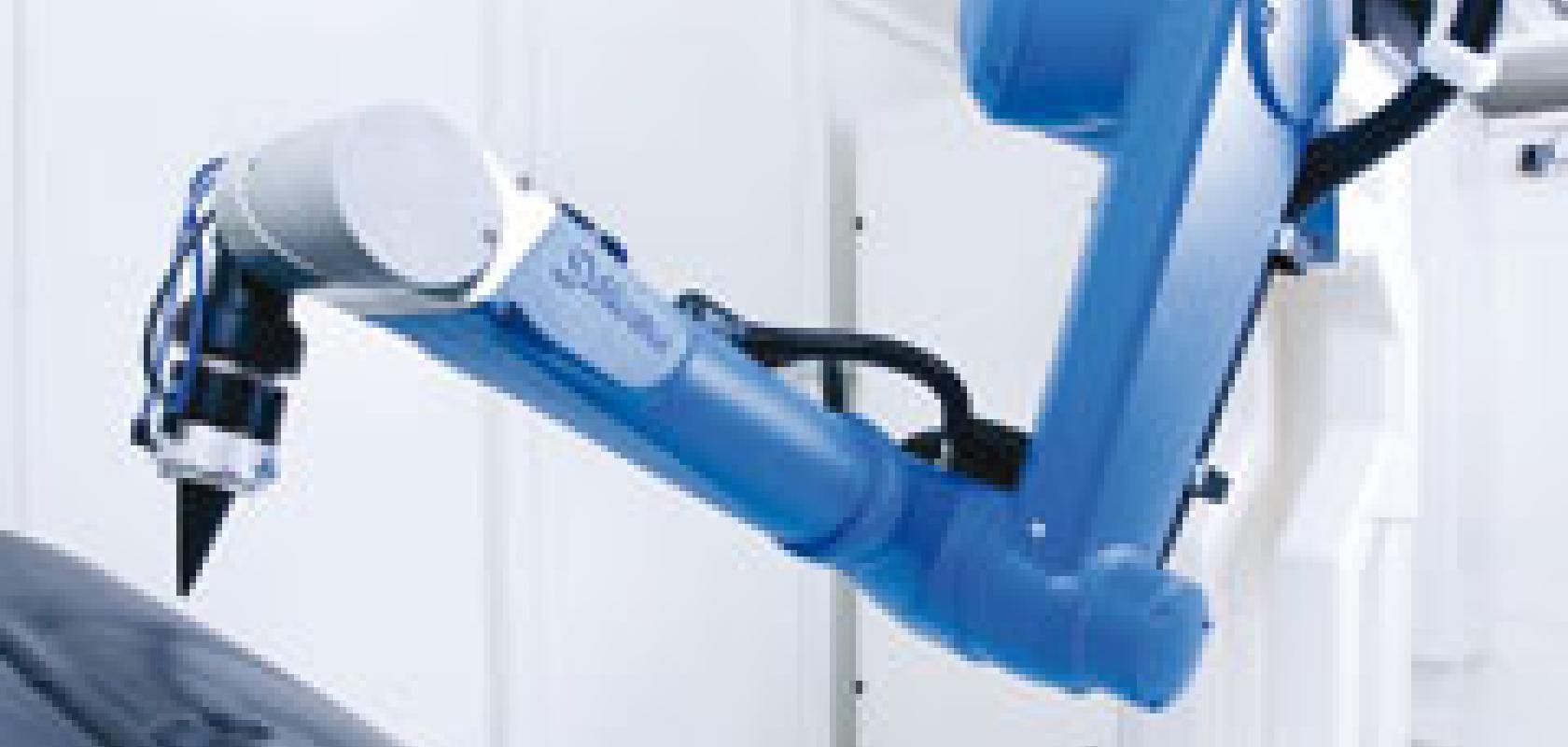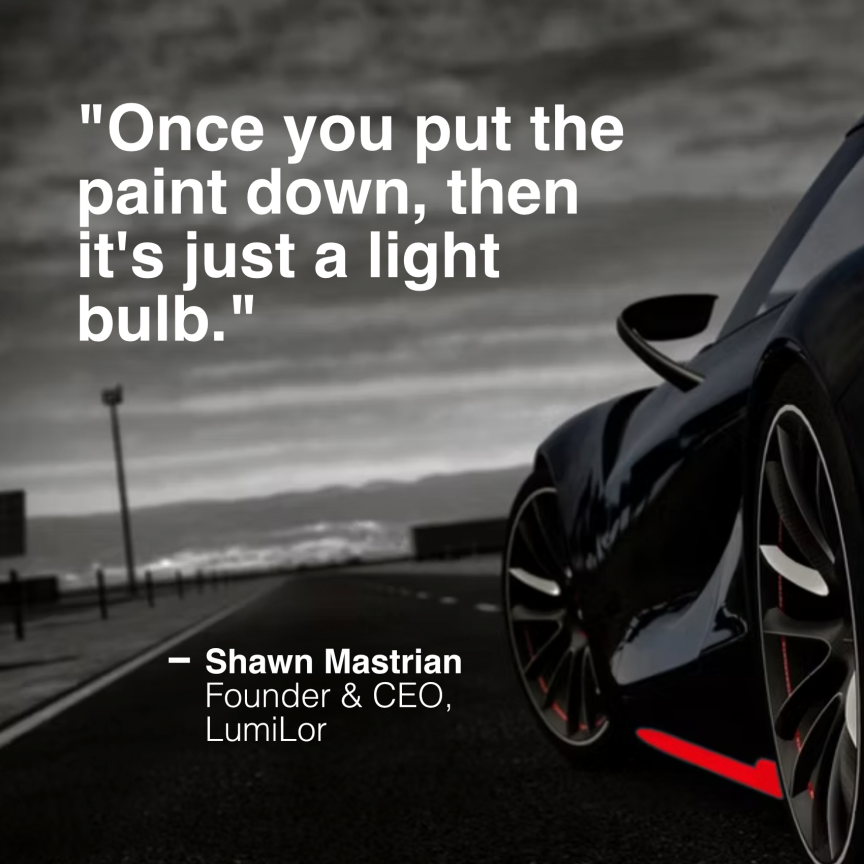There are many component parts of an automotive production line, and photonics is employed to help every step of the way.
Quality control for automotive windscreens is a significant application area. Any driver will notice the black paint strip around the perimeter of the windscreen of the car. This strip is applied to cover the area where the windscreen glass is bonded to the bodywork of the car. The paint constituting the strip is a comparatively expensive material and windscreen manufacturers need to know that enough – but not too much – is being applied to offer the appropriate cosmetic coverage.
The paint is, of course, applied ‘wet’ and trying to measure the thickness is a notoriously difficult procedure, especially on the production line. Now, STIL S.A. of France, in association with its UK distributor Armstrong Optical, has developed a non-contact procedure offering submicron paint thickness resolution by using a newly developed ‘optical caliper’ system. The joy of the measurement procedure is that it also takes into account any vibration of the screen.
Looking through a car windscreen, drivers notice that the outside view changes depending upon which part of the screen aperture the outside world is viewed through.
Modern windscreens are no longer monolayers of glass but are laminates of glass and air. Some of this aberration can be due to varying thickness of the laminar windscreen caused by the interstitial air-gap being ‘squeezed’ or ‘stretched’ during the shaping process, thereby increasing or decreasing the overall thickness of the laminate.
Once again, the measurement of the thickness of the laminar windscreen components (two layers of glass plus an air-gap) is a tricky procedure on a production line.
However, by using a single sensor variant of the optical calipers plus some customised data analysis software STIL and Armstrong have produced a non-contact system that can measure the thickness of the two glass layers, plus the air-gap, while the windscreen passes down the production line.
Cutting and perforating
Sealed CO2 lasers are used to cut and perforate many components of automotive interiors. Specific applications include pre-weakening of airbag cover panels, and drilling and trimming of parts for dashboards, door panels and headliners. The sealed CO2 laser offers several advantages over mechanical technologies, such as drills, knives and water jets, for processing these types of parts. For example, interior parts typically have complex 3D shapes; laser processing can easily work these without producing any mechanical stress on the part. Other benefits of laser processing are its low cost of consumables and high production uptime (because tool bits don’t need to be replaced), even in a relatively ‘dirty’ manufacturing environment.
Traditional work stations for these applications have utilised a laser directly mounted on a robot arm. The disadvantage of this approach is that the weight of the laser head slows the speed at which the arm can move, thus limiting throughput. Recently, Jenoptik Automatisierungstechnik (Jena, Germany) and Staubli Robotics (Pfäffikon, Switzerland), joined together to create the Jenoptik-Votan C BIM (Beam in Motion) laser robot system. This system utilises an articulated delivery arm, similar to that found in many surgical laser systems, together with a stationary CO2 laser. This arrangement enables high-speed, accurate beam movement over a large 3D volume (1400 x 700 x 500mm).

The Jenoptik-Votan BIM utilises an articulated delivery arm that enables accurate, high-speed, CO2 laser cutting of complex shaped parts.
The Jenoptik-Votan C BIM utilises a 300W, Coherent Diamond K-300 laser for trimming and perforating car interior parts such as cup holders, fabric covered door panels, covers or inserts. This model is used because fabric cutting requires a cost effective, small laser, with good beam quality and high peak power. These output characteristics produce a minimal heat affected zone (HAZ), resulting in a cosmetically acceptable finish at the processed edge.
Many auto interior parts, such as those on the instrument panel, door panels and steering wheel, are produced from carbon fibre, which is then covered with synthetic skin or fabric. Typically, the carbon fibre substrate and its covering are each laser processed separately, and then assembled. The main concern in cutting carbon fibre parts is speed; cosmetics are secondary, because these are not seen by the consumer. In addition, it is important the cutting process yields a clean, debris-free edge.
This type of cutting is performed with a Coherent Diamond K-500 laser. This 500W, pulsed CO2 laser was chosen because of its fast rise-time and high peak power. These characteristics produce minimal melting and debris at the processed edges. In addition, the high peak power of this pulsed laser gives it the cutting capabilities of a much high power (and more costly) CW laser.

For airbag panel pre-weakening a CO2 laser cuts the foam layer through nearly completely, while the overlying fabric is left virtually untouched.
Another version of the Jenoptik-Votan is used for panel pre-weakening also. Here, the goal is to weaken the dashboard material that overlays the airbag assembly, so that it will break in a predetermined manner if the airbag is deployed. However, this must be accomplished in a way that doesn’t change the cosmetics of the overlying material, because this degradation would be visible to the consumer on the dashboard.
The dashboard covering typically consists of either leather or foam-backed fabric. In the case of leather, weakening is implemented by perforating the material with a series of small holes. For fabric, the foam layer is cut through nearly completely, while the overlying fabric is left virtually untouched.
To perform these operations, the Jenoptik-Votan is outfitted with a Coherent GEM-100, which is a 100W (CW) CO2 laser. This laser was chosen because it has excellent beam quality and offers power on demand. Specifically, the low M2 beam can be focused to a small spot size, which is necessary to produce 200-300µm diameter holes in leather, as well as to create narrow slits with precise depth control in foam-backed fabric. The beam properties of the GEM-100 also allow these organic materials to be processed without producing any charring, which would be undesirable from a cosmetic viewpoint.

STIL SA has developed products for the automotive industry, including a non-contact method of checking submicron paint thickness, and a method of measuring the thickness of laminar windscreen components.
Displays
There are many accessories that also benefit from photonics technology. An example of this is the lightweight range of eyewear-mounted head-up displays from MicroOptical, available through Pacer, which offers benefits for both automotive manufacturers and vehicle users. The viewers are mounted onto glasses or goggles, thereby delivering information right in front of the user. The information moves with the user, leaving hands free for the task. The displays weigh as little as 28g and are powered by a built-in 7.2V rechargeable lithium ion battery.
MicroOptical viewers have found applications in automotive manufacture, making it much easier and safer to carry out production checks against drawings and manuals on automotive assembly lines. They are also ideally suited to automotive testing, as technicians can check diagrams and test documentation while they work on a vehicle.
Users of heavy earth-moving vehicles can use the viewers to monitor excavation drawings as they carry out ground excavation in the vehicle. Construction vehicle drivers could be checking site information and engineering plans on the job. MicroOptical displays can also be used for in-car DVD systems and gaming systems. The movies or gaming screens are projected onto each passenger’s lightweight head-up display for individual in-car entertainment.


